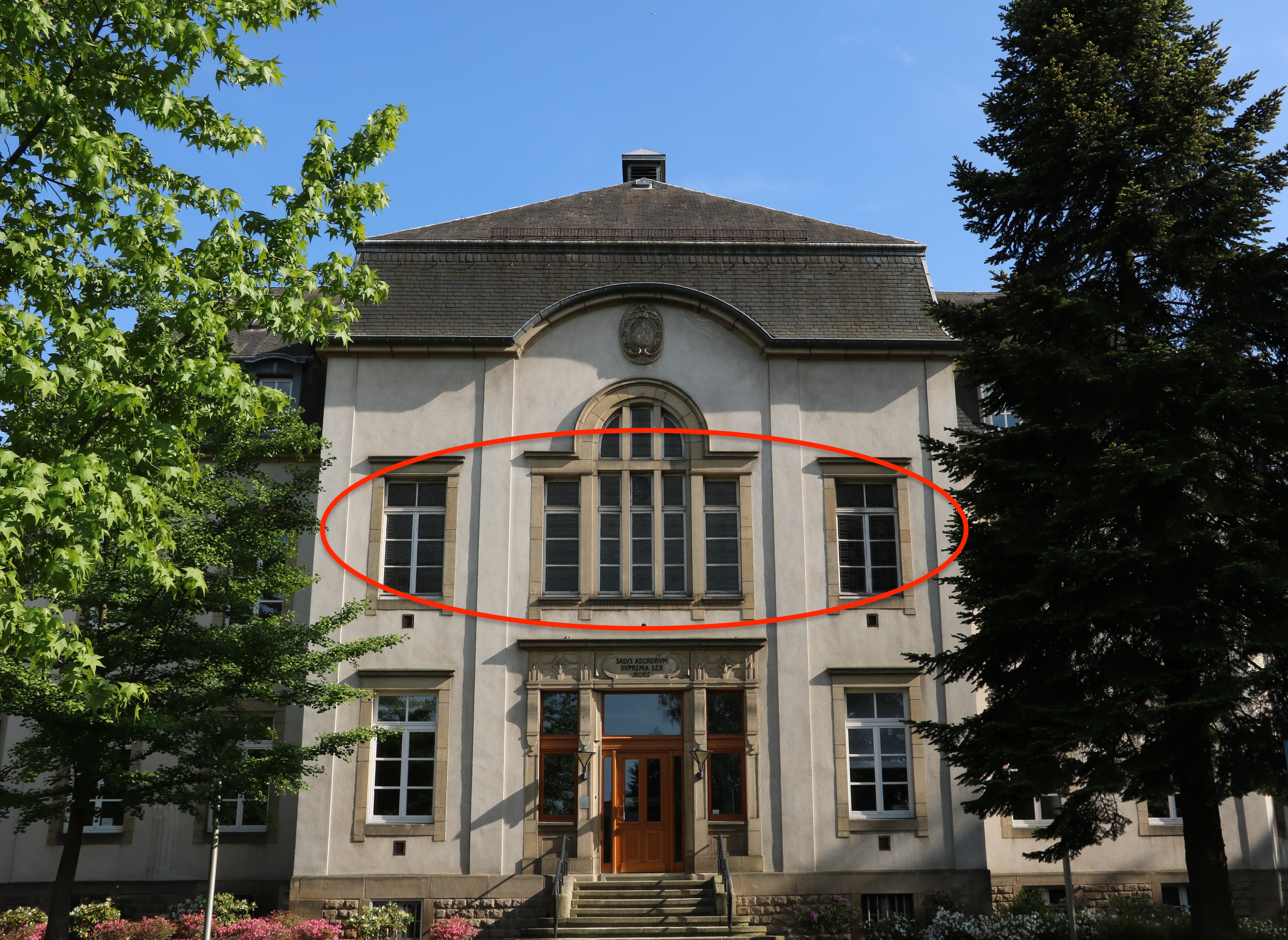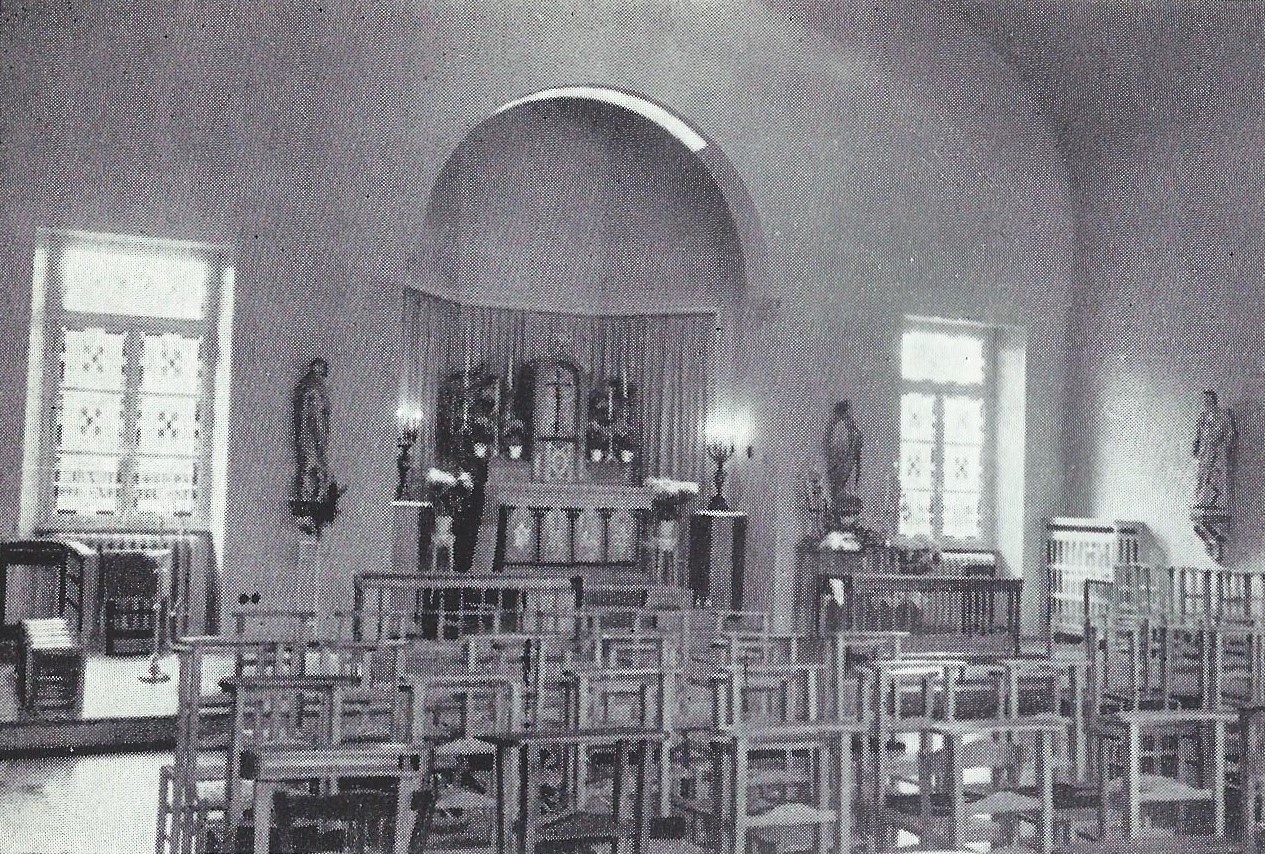The Rise and Fall of a Chapel

Since the opening of the Hospice Central of Ettelbruck in 1855, the divine service had been part of everyday life. Every Sunday and holiday, in the morning and in the evening, a mass was organised inside the building by the almoner of the Hospice, often with the assistance of two other chaplains (ANLux, Règlement d’administration générale 1855). These masses were open to all patients. Additionally, the almoner was assigned to the organisation of religious services on other days, too, at the hours decided by the director. Usually, the position of almoner was occupied by the parish priest of Ettelbruck (FLIES). Over the years, the nomination of an own almoner was proposed on multiple occasions in the Chamber of Deputies, but the doctors rejected the proposals (ANLux). The Hospice was eventually provided with an own almoner in 1977 (REUTER, pp. 125-127). Nevertheless, he was subordinated to the director and the rules stated that he did not represent a replacement for the doctor position; his functions were limited solely to providing psychological assistance (ANLux, Règlement d’administration générale 1855).
As early as 1867, the construction of an own chapel was also proposed by Minister Félix de Blochausen. Nonetheless, it took several years for these plans to be completed, as multiple criteria had to be established (such as, for instance, the position of the entrance and of the choir); different plans for this construction were proposed over the years, like the building of a Gothic style chapel. In the meantime, masses were generally held in provisional chapels inside the old casern, as it was not yet permitted to organise divine services for the patients in the local church. In 1886, a chapel with 150 seats was proposed; the project was discussed in the Chamber of Deputies. In the same year, the Catholic Church allocated a part of its territory to the Hospice.

It was not until 1906 that the building finally received an own chapel, which was built in the old ballroom, on the first floor of the administration building. The chapel was situated above the director’s office. Here, the masses reserved for the patients and the personnel were held every Sunday and every morning at 6.15. In 1987, after the departure of the Sœurs Hospitalières de Sainte Élisabeth, the masses started being held at 8.30; the divine service was being held at 16.30 (REUTER, pp. 125-127). The position did not change anymore, despite new construction plans in 1937, which targeted the demolition of the ancient casern and the construction of new pavilions which included a chapel, a ballroom, a consulting room and a dental surgery. During the Second World War, when the building was affected by multiple bombings, the remaining inhabitants took shelter in the cave of the building, where a provisional chapel was arranged.
In recent years, the chapel’s position was the object of multiple complaints from members of the personnel, who criticised its unfavourable position. After the retirement of the last almoner and the previous privatisation of the CHNP, the current parish priest of Ettelbruck volunteered to take charge of the divine services for the patients, as the building was no longer fit for purpose (i.e. employing state officials). These changings rendered the organisation of specific masses inside the CHNP superficial and the patients attended more and more the masses organised in the church Saint-Sébastien, instead. The chapel of the CHNP is still used for the execution of specific ceremonies and lectures, which are primarily aimed at handicapped patients. However, these ceremonies are not organised at regular times and the chapel is mainly employed as a walkway between the other parts of the building.
Even though religion never really disappeared from the CHNP, its presence heavily reduced over the years. The title “almoner” has been completely abandoned and the functions of the priest of Ettelbruck inside the CHNP have been reduced.
This text is partly based on sources consulted in the Archives diocésaines de Luxembourg: GV Korrespondenz 7-0078.jpg; GV Pfarrakten 2397 (1867), Proposition du directeur général de l’intérieur de construire chapelle basant sur plan spécifique, 3.4.1867; Pfarrakten 2424, Discussion sur l’agrandissement de la maison de santé dans Chambre des députés, 1.12.1937).
We would also like to thank Dr Yves De Smet and Abbé José Reuter for their help.
